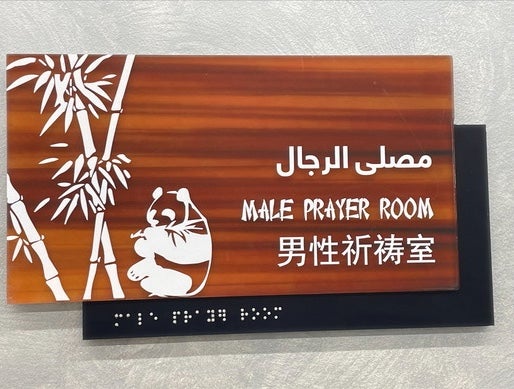
Naqd, meaning “critique,” has historically been vital to Arabic epistemology, emphasizing the verification of knowledge, ethics, and cultural values. More specifically, it functions as a framework through which scholars, educators, and students can identify flaws and provide an appraisal. Naqd needs to be revisited to enhance the quality of discourse, reclaim cultural integrity, and promote moral reasoning.
In higher education across the Arab world, methodology courses and critical analysis often center on post-structuralism, postmodernism, interpretivism, among other Western theoretical frameworks. Consequently, Naqd is overlooked. This omission marginalizes the intellectual contributions of Arab/Muslim scholars and reinforces the assumption that critical discourse is exclusively a Western construct. As a result, cultural hegemony is subconsciously and indirectly reinforced, which puts a restraint on integrating Arab thought within academic discourse.
Naqd can historically be traced back to pre-Islamic Arabia. Oral poetry flourished and poets were considered critics. Scholars expanded this tradition in the former years of Islam, engaging with theological texts and literary forms. In this context, Naqd developed its vocabulary and became a tool for understanding the complexities of the emerging ideologies that shaped society. Naqd is a tool that invokes craftsmanship, or “Sina’a,” it constitutes an act informed by cultural and Islamic epistemologies whose primary function is to attribute or retract value. Naqd is, therefore, the brainchild of the formation of Fikr as human intellect in action.
So, what constitutes critique in Arabic thought or the Arab mind regarding techniques and concepts? Let’s start with the assumption that we do not know what Naqd is. In pre-Islamic Arabia, Naqd was the product of listeners of oral poetry, while after the establishment of Islam, it was the product of writers responding to literary scripts and scripture. Before Islam, Naqd in Arabia tackled proper articulation, eloquence, and meaning. With the advent of Islam and the proliferation of poetic contexts, the art of criticism likewise expanded and broadened its horizons, especially with the Arab world’s increasingly intercultural encounters with Greece, India, Persia, and the Levant. Exposure and engagement with argumentation and Jadal, logic and falsafa were equally essential to the growth of the critique as discourse. In its formative years, Naqd was performative, as it played a crucial role in conveying meaning, informing and enlightening the hearer. The purpose of Naqd was limited to identifying merit and condemning blemishes.
Methodologically, the Arabic word Naqd means both critique and money/currency. It refers to discernment in appraising coins, an evaluative process of distinguishing between worthy and poor-quality coins. The association with monetary value suggests how significant the act of Naqd is. The word Naqd, therefore, emerged in Arab literary history to refer to expertise. Naqd represented an effort to provide a set of standards or criteria to judge a literary piece's merit. If a literary work falls short of these merits, it is not considered meaningful. This appraisal demonstrates an early attempt to formulate a rubric for literary criticism. Unlike coins, literary works do not align with this suggested rubric and carry no distinctive stamp that gives them value.
The growth of Naqd into a discourse was a response to the rise of Islamic scholarship, which developed its epistemic criteria as Islam moved across Arabia, encountering diverse faiths and cultures. Naqd became prominent and was practiced with the rise of the Hadith authentication movement and emergence of Sahih Hadith scholarship, which seeks to adhere to specific authentication standards. For instance, Hadith was subject to critique against the standards of Isnad and Matn. The role of Naqd in critiquing unauthorized Hadiths is crucial for ensuring the accuracy and authenticity of Islamic texts.
Over time, this rigorous methodology led to the formation of the primary schools of jurisprudence, diversification of scholarly critique, and the rise of Faqih as a critic. The critic’s role and mentality in Arabia primarily responded to the Hadith verification process and the rise of the Ahl Al-Ra’y school of thought. Al-Ra’y (sound reasoning) emerged during the formative years of Islam, manifested in how the Quran enjoined believers to use Aql to substantiate belief. The Faqih (Jurist), like the Naqid (Critic), plays a crucial role in critique: applying specific standards to extract meaning from the text or situation and using this understanding to render a verdict. Faqih, for example, uses Naqd in textual analysis, which involves profoundly examining literary and philosophical texts, focusing on content, and uncovering deep meaning and text authenticity.
The Pedagogies of Naqd
Tamhis and Tamyeez
The occupation of Naqd is to identify falsification, that is, what seems incompatible with the social and cultural norms of the time. The task of Naqd is to deplore texts that deprecate meaning. Naqd is, therefore, Tamhis, which is Arabic for verify, to confirm via scrutiny and validation. It served as a method to reach the truth about raised controversies by deploying rational evidence to validate their perspective and refute the contrary views. Naqd, therefore, comes in the form of rational debate, not a violent one, marked by logical, linguistic, and rhetorical rigour. It is a pointer in the direction of truth, which renders the latter approaching and not receding. The main purpose of Naqd is to illustrate and personalize, if not soliloquize, what is often abandoned due to difficulty, capriciousness, or mere misunderstanding. The dialectics of Tamhis and Tamyeez serve as a case in point.
In Arabic thought, Naqd is preconditioned by an initial process of tamyeez, meaning to distinguish or acutely discriminate.Yameez is a variation of the word tamyeez, which means to separate or distinguish between. Its impact, however, transcends grammar and literature, departing from literary theory, influencing society's cultural fabric, and aligning with, if not generating, its values and norms. Naqd is initially diagnostic and ultimately performative. In effect, the correlation of Naqd to coins indicates that the former behaves similarly to the latter, aligning with a pseudo-economic paradigm. Very much like inflated currency, given the lack of regulating principles, the value of a given text inflates, leading to the rise of unmeasured metrics and the dominance of free play and excess.
Naqd, therefore, serves as a process of discernment, which preconditions and aims at Tamhis, which refers to scrutiny, where the critic seeks to illuminate truths and uncover inconsistencies within a text or idea. This “cleansing” process enhances the clarity of intellectual discourse by refining arguments. By contrast, Tamyeez, meaning to distinguish or differentiate, requires critics to separate valuable insights from superficial or flawed arguments. It emphasizes discernment that transcends surface-level evaluations.
Like the strategies employed in monetary inflation, structural, tamyeez-oriented reforms and modifications are suggested to maintain merit-based regulations and prevent a rapid devaluation of ethics, standards, and performance.
Taqweem and Taqyeem
Naqd refers to Taqweem and not only Taqyeem. The former relates to the sana’ah of giving value, while the latter refers to adjusting and improving. Such an attempt transcends its limited application to literary works; it uses directives such as aesthetics, content, history, and moral value as guiding principles.
One of the main methods of Taqweem is Tahqiq (verification). This dominant method emerged during the seventh and eighth centuries in terms of the authentication of texts and narratives and the rise of documentation, which entails Ihtijaj (evidence-based argumentation) that relies on Huja (preponderance of evidence) in the absence of Dalil (concrete evidence) or Istishhad bil khabar citing unquestionable reports and witnesses as efforts to substantiate proof and separate the wheat from the chaff. Taqweem also means calendar in Arabic, which refers to calibrating dates based on specific criteria. Within the Islamic context, Taqweem echoes “Islah,” which means to reform or fix.Therefore, Taqweem is seen as a point of departure from Taqyeem, which is most widely associated with assessment. Therefore, Naqd’s task is identifying a derailment and attempting to place the rail in the proper direction.
Dr. Wisam Abdul-Jabbar is Assistant Professor and Assistant Dean of Student Affairs at Hamad Bin Khalifa University’s College of Humanities and Social Sciences.
This piece has been submitted by HBKU’s Communications Directorate on behalf of its author. The thoughts and views expressed are the author’s own and do not necessarily reflect an official University stance.
Related News










